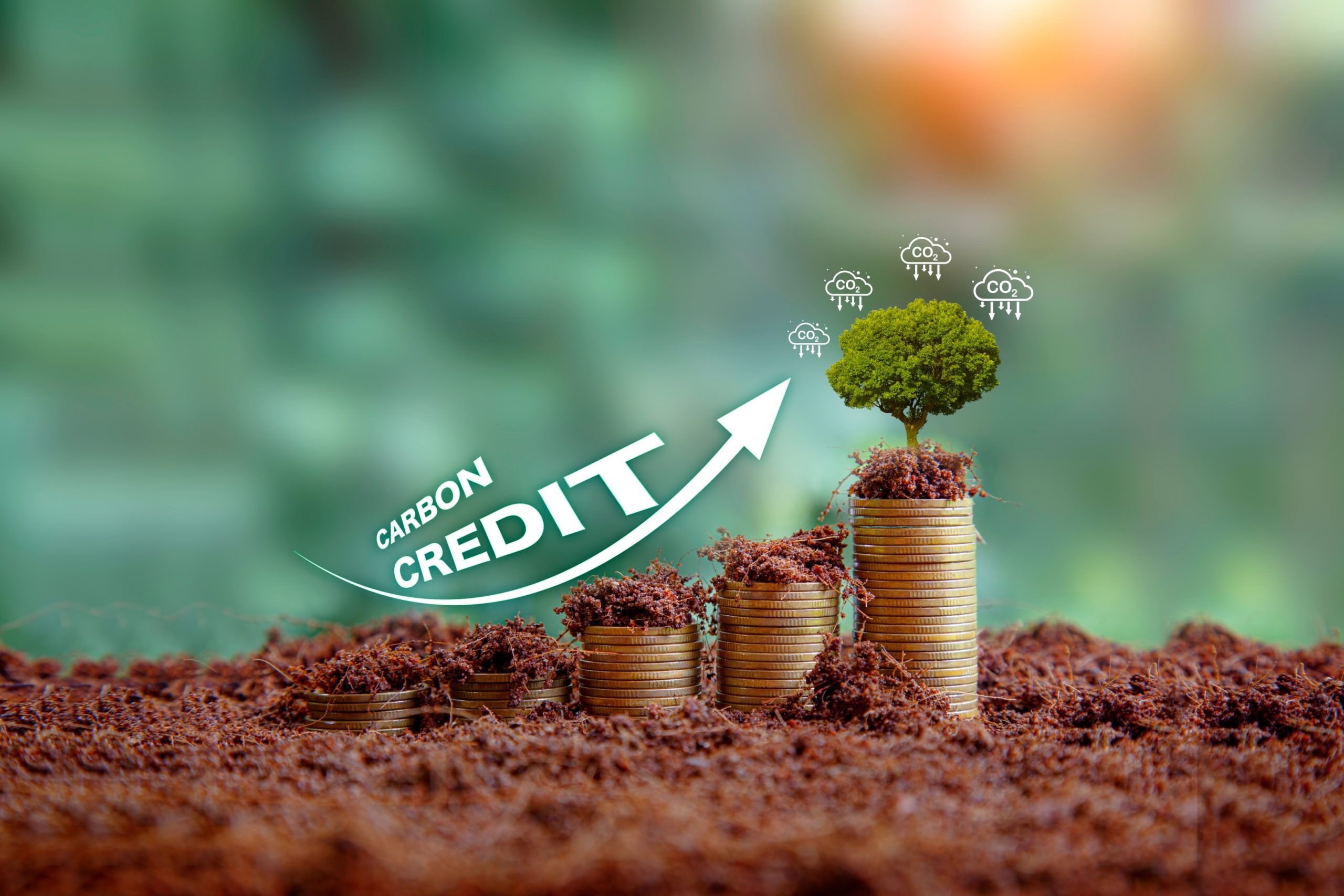Understanding Carbon Offsetting

What is Carbon Offsetting?
Carbon offset business is a strategy for compensating carbon emissions by investing in projects that reduce emissions elsewhere. This process involves purchasing emissions reductions, known as carbon credits or carbon finance, to offset one tonne of carbon emissions.
It is a versatile approach that allows for emissions reductions on a global scale, not confined to local boundaries. This means that individuals and small businesses from around the world can make significant strides towards mitigating climate change by supporting global initiatives.
The Impact of Carbon Offsetting
Carbon offsetting provides a tangible way for individuals and businesses to reduce their carbon footprints and contribute to global climate action.
By investing in carbon offset projects, such as reforestation, renewable energy, and energy efficiency, participants can offset their emissions and work towards becoming carbon neutral.
This process not only helps in the climate crisis and balancing out the emissions but also promotes sustainable practices, new trees and innovations across various sectors.
Measuring and Reducing Carbon Footprint
Measuring a carbon footprint is the critical first step in reducing emissions and offsetting carbon. Accurate measurement helps identify the primary sources of emissions and provides a baseline against which reduction efforts can be measured.
Farmers, ranchers, and landowners can engage in carbon farming and carbon sequestration practices to capture and store CO2, and greenhouse gases, improving soil quality, enhancing crop production, and minimizing pollution.
Tools for Calculating Carbon Footprint
Various tools, such as carbon footprint calculators, assist individuals and businesses in understanding their current carbon footprint and emissions. These calculators evaluate factors like energy use, transportation, and waste production to estimate overall emissions.
By identifying key areas for improvement, users can implement targeted strategies to improve efficiency and reduce their carbon footprint.
Strategies for Reducing Carbon Footprint
Reducing carbon footprint can be achieved through several methods:
- Energy Efficiency: Implementing energy-saving practices and upgrading to energy-efficient appliances and systems.
- Renewable Energy: Switching to renewable energy sources such as solar, wind, and hydroelectric power.
- Sustainable Practices: Adopting sustainable practices in operations, like reducing waste, recycling, and supporting sustainable supply chains.
The Carbon Offset Market
Growth of the Carbon Offset Market
The carbon offset market is expanding rapidly, driven by increasing awareness residual carbon footprint and commitment to sustainability. More companies and individuals are seeking to offset their carbon emissions, leading to robust growth in the voluntary carbon market. This market enables the trading of carbon credits, where participants can buy and sell credits to offset their emissions.
Voluntary vs. Compliance Markets
The carbon offset market is divided into two primary segments:
- Voluntary Carbon Market: Companies and individuals voluntarily purchase carbon offsets to mitigate their carbon footprint. This market is less regulated but driven by corporate social responsibility and consumer demand for sustainable practices.
- Compliance Carbon Market: This market operates under cap-and-trade regulations imposed by governments. Companies must adhere to legal limits on emissions and can trade carbon credits to comply with these regulations.
Opportunities for Investment and Sustainable Development
The carbon offset market offers significant opportunities for investment in emissions reduction in projects around the world. By participating in this market, businesses and individuals can support projects that promote sustainable development, such as renewable energy installations, forest conservation, and community-based projects. These investments not only help reduce global carbon emissions but also generate economic and social benefits for local communities.
Carbon Credits and Their Value

Carbon credits represent a reduction of one tonne of CO2 or its equivalent from the atmosphere. These credits are vital tools in the carbon market, providing financial incentives for emissions reduction projects. The value of carbon credits varies based on several factors, including the type of project, location, and the verification standard.
Trading and Market Dynamics
Carbon credits can be bought and sold on the carbon market, enabling entities to achieve carbon neutrality by offsetting their emissions. High-quality carbon credits, independently verified by standards such as the Verified Carbon Standard (VCS) or the Gold Standard, are essential for maintaining market integrity. The demand for these credits is influenced by regulatory frameworks, market conditions, and corporate sustainability goals.
Ensuring High-Quality Carbon Credits
To ensure the credibility of carbon credits, projects must adhere to strict verification standards. These standards assess the project’s environmental impact, additionality (the extent to which the project contributes to emissions reductions beyond what would have occurred without it), and permanence. High-quality credits are crucial for building trust in the carbon credit and offset market and ensuring that investments lead to genuine environmental benefits.
Opportunities and Challenges in Carbon Offsetting
Carbon offsetting offers numerous opportunities for businesses to reduce their carbon footprint and contribute to sustainable development.Additionally, businesses can leverage carbon offsets to achieve net-zero emissions and gain a competitive edge in the market.
Challenges and Greenwashing Risks
Despite the benefits, the carbon offset market faces several challenges. Ensuring the integrity of carbon offset projects and preventing greenwashing—where companies falsely claim environmental benefits—are significant concerns.
The lack of standardization and regulation in the voluntary carbon market can make it difficult for participants to navigate and verify the authenticity of offsets.
The Importance of Education and Awareness
Education and awareness are key to promoting the benefits and addressing the challenges of voluntary carbon markets and offsetting. Stakeholders must understand the importance of rigorous verification, the potential for co-benefits, and the need for transparency in reporting. By fostering a well-informed market, participants can make better decisions and contribute to the overall effectiveness of carbon offset initiatives.
Carbon Offset Projects and Sourcing
Types of Carbon Offset Projects
Carbon offset projects encompass a wide range of activities, with many projects including:
- Renewable Energy Projects: Installing solar, wind, or hydroelectric power systems to replace fossil fuel-based energy.
- Reforestation Projects: Planting trees and restoring forests to sequester carbon dioxide from the atmosphere.
- Energy Efficiency Projects: Implementing technologies and practices that reduce energy consumption and emissions.
Removals vs Reductions
Carbon removals involve the physical removal of CO2 from the atmosphere. This can be achieved through natural processes, such as tree planting and soil carbon sequestration, or technological solutions, such as direct air capture. Removals are essential for addressing historical emissions and achieving long-term climate goals.
Carbon reductions involve decreasing emissions from specific sources, such as industrial processes, transportation, and energy production. This can be accomplished through energy efficiency improvements, transitioning to renewable energy, using fossil fuels, and adopting cleaner technologies. Reductions in annual emissions are crucial for preventing future emissions and mitigating ongoing climate change impacts.
Both carbon removals and emission reductions alone are essential components of a comprehensive climate strategy. While reductions help prevent additional emissions, removals address the excess CO2 already in the atmosphere. A balanced approach that includes both strategies is necessary to achieve net-zero emissions and stabilize the global climate.
Carbon Offset Pricing and Marketplaces
Carbon offset pricing varies based on several factors, including the type of carbon offset project, its location, and the verification standard. Projects that offer significant co-benefits, such as biodiversity, forest conservation project and community development, often command higher prices. Additionally, market demand, regulatory frameworks, and the overall supply of credits influence pricing dynamics.
Carbon offset marketplaces provide a platform for buying and selling carbon credits. These marketplaces increase transparency, liquidity, and accessibility in the carbon offset market. They allow participants to compare different projects, assess their impacts, and make informed purchasing decisions. Marketplaces also facilitate the tracking and verification of tonnes of carbon credits, ensuring the integrity of transactions.
The price of carbon credits can significantly impact the demand for offsets and the development of emissions reduction projects. Higher prices can incentivize the creation of new projects and the implementation of innovative technologies. Conversely, lower prices may limit the financial viability of certain projects. Understanding these dynamics is crucial to sustainability strategy for stakeholders looking to maximize their positive impact while in the carbon offset market.
The Role of Carbon Offsetting in Reducing Carbon Dioxide Emissions

Carbon offsetting plays a crucial role in reducing carbon dioxide emissions and mitigating climate change. It helps bridge the gap between current emissions and the levels required to meet global warming targets. By supporting carbon offset projects in developing countries, businesses and individuals can contribute to significant emissions reductions, tackle climate change and promote sustainable development.
While carbon offsetting is essential, it should not be seen as a substitute for direct emissions reductions. Instead, it should complement efforts to reduce emissions at the source. A comprehensive climate strategy includes both reducing emissions through sustainable practices and offsetting any remaining emissions to achieve carbon neutrality.
Carbon offsetting projects can also promote sustainable development by using emissions savings providing co-benefits such as job creation, community development, and biodiversity conservation. These carbon reduction projects support the United Nations Sustainable Development Goals (SDGs) and contribute to a more resilient and equitable global economy.
Conclusion
Carbon offsetting is a growing business that offers significant opportunities for reducing carbon emissions and promoting sustainable development. However, challenges such as ensuring the integrity of carbon offsetting schemes and projects and preventing greenwashing of carbon benefits must be addressed. Education and awareness are critical to promoting the benefits and addressing the challenges of carbon offsetting.
Carbon offsetting can play a crucial role in reducing carbon dioxide emissions and mitigating climate change, but it should be used in conjunction with emissions reduction measures. As the carbon offset market continues to grow, stakeholders must focus on maintaining high standards of verification and transparency to ensure the long-term success and credibility of carbon offset initiatives.
